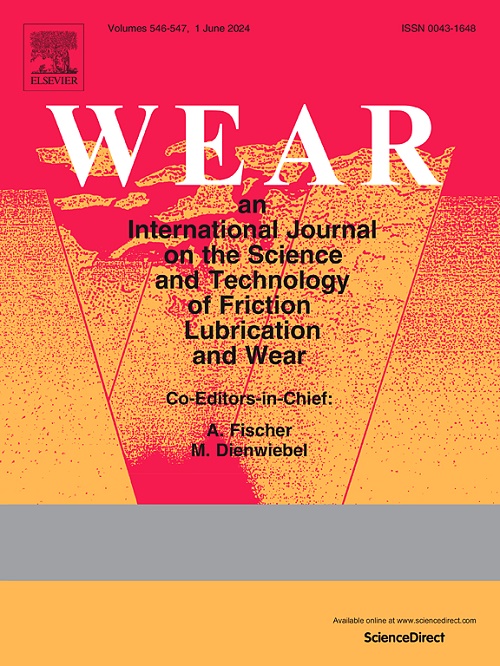磁流变抛光下增材制造Ti6Al4V合金摩擦学去除行为的纳米尺度研究
IF 5.3
1区 工程技术
Q1 ENGINEERING, MECHANICAL
引用次数: 0
摘要
为了提高 Ti6Al4V 工件的表面质量,克服传统加工中存在的加工硬化和烧蚀现象,引入了磁流变抛光方法来改善添加成型 Ti6Al4V 的表面质量。在本研究中,通过分子动力学(MD)模拟结合磁流变抛光(MRP)实验和纳米划痕测试,系统地揭示了纳米尺度添加成型 Ti6Al4V 合金的摩擦学去除行为。采用 EAM-Tersoff-Morse 势函数联合模型模拟了 SiC 磨料颗粒与 Ti6Al4V 工件之间的界面相互作用,并分析了滑动参数对温度场、力场和表面下损伤的影响。实验结果表明,表面粗糙度随压力增大先减小后增大,材料去除率随压力增大继续增大,残余应力减小了 76.75%。MD 模拟结果表明,随着滑动速度的增大,磨粒滑动深度的增大导致表面原子位移增大,次表面损伤层增厚,位错密度减小。纳米划痕实验验证了模拟中摩擦力随压力增大而增大的规律,并揭示了摩擦系数在高速时因热效应而非线性变化。模拟和实验在表面粗糙度、材料去除率和残余应力趋势方面高度一致。这项研究为优化 MRP 工艺参数提供了理论依据,对指导航空航天精密部件和医疗植入物的表面处理具有重要意义。本文章由计算机程序翻译,如有差异,请以英文原文为准。
Nanoscale understanding of the tribological removal behaviors for additive-fabricated Ti6Al4V alloy under the magnetorheological polishing
In order to enhance the surface quality of Ti6Al4V workpieces and overcome the problems of work-hardening and ablation phenomena that exist in conventional machining, magnetorheological polishing method is introduced to improve the surface quality of additively molded Ti6Al4V. In this study, the tribological removal behavior of additively fabricated Ti6Al4V alloys at the nanoscale is systematically revealed through molecular dynamics (MD) simulations combined with magnetorheological polishing (MRP) experiments and nano-scratch tests. A joint EAM-Tersoff-Morse potential function model was used to simulate the interfacial interaction between SiC abrasive particles and Ti6Al4V workpieces, and to analyze the effects of sliding parameters on the temperature field, force field, and subsurface damage. The experimental results show that the surface roughness decreases and then increases with increasing pressure, the material removal rate continues to increase with increasing pressure, and the residual stress decreases by 76.75 %.The MD simulation shows that the increase of the abrasive grain sliding depth leads to the increase of the surface atomic displacement, the thickening of the subsurface damage layer, and the decrease of the dislocation density with the increase of the sliding speed. The nano-scratch experiments verified the law of friction increasing with pressure in the simulation, and revealed that the friction coefficient varied nonlinearly at high speeds due to thermal effects. The simulations and experiments are highly consistent with each other in terms of surface roughness, material removal rate and residual stress trends. This study provides a theoretical basis for optimizing the MRP process parameters, which is of great significance in guiding the surface treatment of aerospace precision components and medical implants.
求助全文
通过发布文献求助,成功后即可免费获取论文全文。
去求助
来源期刊

Wear
工程技术-材料科学:综合
CiteScore
8.80
自引率
8.00%
发文量
280
审稿时长
47 days
期刊介绍:
Wear journal is dedicated to the advancement of basic and applied knowledge concerning the nature of wear of materials. Broadly, topics of interest range from development of fundamental understanding of the mechanisms of wear to innovative solutions to practical engineering problems. Authors of experimental studies are expected to comment on the repeatability of the data, and whenever possible, conduct multiple measurements under similar testing conditions. Further, Wear embraces the highest standards of professional ethics, and the detection of matching content, either in written or graphical form, from other publications by the current authors or by others, may result in rejection.
 求助内容:
求助内容: 应助结果提醒方式:
应助结果提醒方式:


